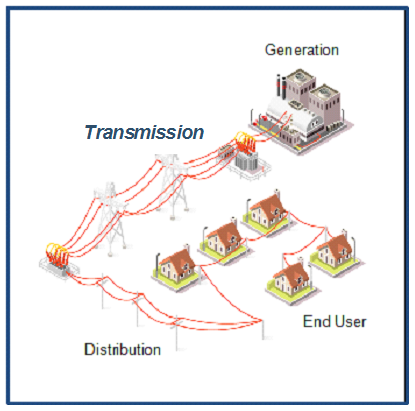There are four key components to the delivery of electricity: Generation, Transmission, Distribution and End-user Consumer. The second stage, transmission, is the part of the system that carries electricity through high-voltage powerlines from generating stations to distribution utility substation transformers. Transmission lines are distinguished from distribution lines by their high voltage (from 72KV to 500KV) and ownership. The 26,000 km of transmission lines in Alberta are built, owned, operated and maintained by Transmission Facility Owners (TFOs).
TFOs work with the Alberta Electric System Operator (AESO) to balance the supply and demand of electricity in Alberta and to ensure that the grid has sufficient power. The AESO is responsible for forecasting future electricity needs and planning for a system that consistently supplies the electricity needs of Albertans. For example, the AESO’s 2017 Long Term Transmission Plan includes plans for adjustments and new construction to accommodate an increase in generation from renewables.
The cost of transmission (facilities and operation) is recovered through transmission rates charged to consumers who pay in proportion to their use of the transmission system. The transmission rate is approved by the Alberta Utilities Commission (AUC). Rates are applied to consumers/members according to consumption. Battle River Power Coop, as other distribution system operators, includes this charge on the monthly member bill. At Battle River Power Coop this amount is a ‘flow through’ and all the funds collected are applied to the transmission cost.


